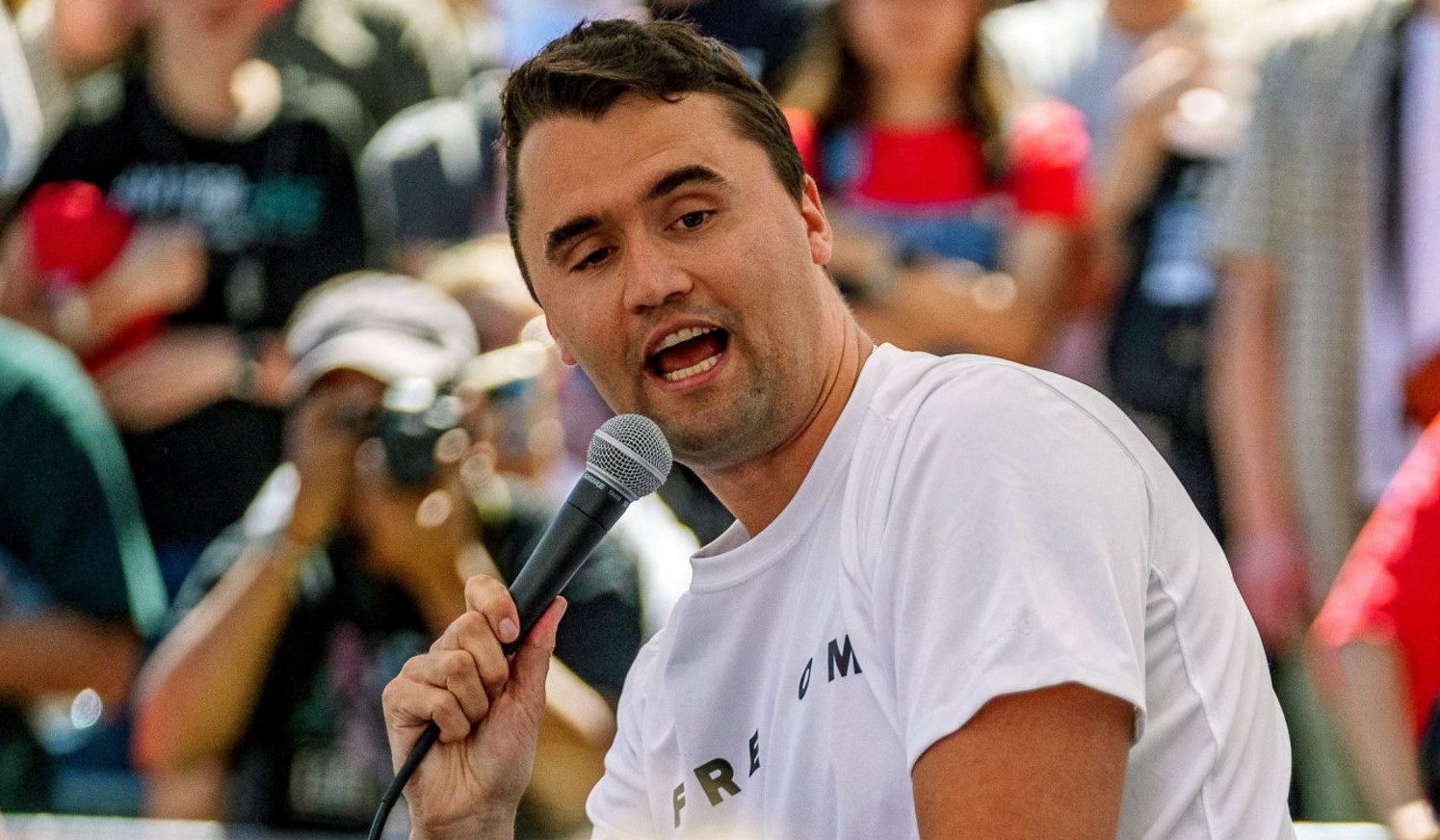The shock of a political assassination does not fade quickly. Days after the killing of Charlie Kirk, founder of Turning Point USA and one of the most polarizing conservative activists in America, new details are still emerging — details that illuminate not only the violence of that day but also the extraordinary circumstances surrounding his final moments.
For many, the image of Kirk collapsing in front of thousands of students at Utah Valley University remains seared into memory. But behind the scenes, in the frantic race to save his life, doctors uncovered something unusual — a detail that one surgeon described as nothing short of a “miracle.” It was this unexpected factor, according to Turning Point USA, that may have prevented even more lives from being lost.
A Rally That Turned Deadly
On September 10, Kirk was in Utah to kick off what he had branded the “American Comeback Tour.” The 31-year-old activist had built a reputation as a combative debater, unafraid to wade into the most divisive cultural battles of the age.
The rally drew more than 3,000 attendees, a mixture of loyal supporters and curious onlookers. For much of the afternoon, the event unfolded as expected: Kirk sparring with questioners, defending his views, and rallying his base with familiar rhetoric about free speech and Second Amendment rights.
But then, as he began addressing a question on gun violence, the sound of a rifle cracked through the air. Within seconds, Kirk fell backwards, blood pouring from his neck.
Authorities later alleged that the shooter — 22-year-old Tyler Robinson — had taken position on a rooftop, armed with a .30-06 Winchester bolt-action hunting rifle. It was a weapon designed to fell elk, moose, and other large animals. And in this case, it had been aimed at a man on stage.
The Weapon and Its Power
The choice of weapon has horrified investigators and medical experts alike. The .30-06 is a high-velocity round known for devastating power. “This is not a small-caliber round that wounds,” one law enforcement official noted. “It’s a round designed to kill — and to kill efficiently.”
Ordinarily, such a bullet would have torn through its target and continued on its path with lethal force. At the rally, there were dozens of staff, students, and special guests standing directly behind Kirk. Had the bullet exited his body, the potential for multiple casualties was enormous.
And yet, when surgeons examined Kirk’s wound, they found something unexpected: the bullet had lodged inside, stopped before it could pass through.
A Surgeon’s Astonishment
The revelation came not from rumor, but from the doctor who operated on Kirk during the frantic attempts to save his life. According to Andrew Kolvet, spokesperson for Turning Point USA, the surgeon could hardly believe what he was seeing.
“I just spoke with the surgeon who worked on Charlie in the hospital,” Kolvet said in a statement. “He told me the bullet absolutely should have gone through — which is very, very normal for a high-powered, high-velocity round. He said, ‘I’ve seen wounds from this caliber many times and they always just go through everything. This would have taken a moose or two down, an elk, etc.’”
But in Kirk’s case, it did not.
“His body stopped it,” Kolvet explained.
The “Man of Steel”
The surgeon speculated that Kirk’s unusually high bone density played a critical role.
“His bone was so healthy and the density was so, so impressive that he’s like the man of steel,” Kolvet relayed. “It should have just gone through and through. It likely would have killed those standing behind him too.”
The surgeon described it as a miracle: the kind of anomaly that defied his medical expectations.
Kolvet drew a poignant conclusion: “Even in death, Charlie managed to save the lives of those around him.”
Faith, Fate, and Framing
For Turning Point USA, the detail has become part of a larger narrative — one that paints Kirk not only as a martyr to political violence but also as a figure whose very body shielded others from harm.
In religious and conservative circles, the language of miracles carries weight. Kirk’s supporters see symbolism in the idea that, even as his life was taken, he inadvertently prevented greater tragedy. For critics, however, such framing risks mythologizing a man whose career was built on deeply divisive positions.
Kirk’s Controversial Legacy
Kirk was no stranger to controversy. His rhetoric often pushed the boundaries of political discourse. He had dismissed aspects of the civil rights movement, taken a hardline stance against abortion and LGBTQ+ rights, and once argued that some gun deaths each year were “worth it” to preserve Second Amendment freedoms.
For opponents, his assassination does not erase those positions. For supporters, it only strengthens the perception that he was a warrior for their values, cut down because of them.
The Shooter and the Charges
Meanwhile, Tyler Robinson, the 22-year-old accused of the assassination, now faces a raft of charges including aggravated murder. Police believe he acted alone, though the investigation continues into his motives. Authorities say the choice of weapon and the precision of the shot suggest planning, though no formal statement has been made about Robinson’s ideology.
The Scene Inside the Hospital
While the surgeon’s words about the bullet stopping have drawn attention, the overall picture remains one of tragedy. Despite the extraordinary fact that no bystanders were struck, Kirk himself could not be saved.
Medical teams worked frantically to stabilize him. He had lost massive amounts of blood, and the bullet had destroyed critical structures in his neck. Within hours, former President Donald Trump confirmed what many feared: Kirk had died.
The Controversy Over Reactions
In the wake of Kirk’s death, reactions have reflected the polarization of American society. Supporters rallied, casting him as a martyr. Detractors pointed to his own rhetoric on guns, noting the grim irony that he was killed while discussing gun violence.
The controversy even reached the world of entertainment: Jimmy Kimmel Live was abruptly canceled after the host made remarks suggesting that Trump supporters were seeking to exploit the shooting for political gain. The cancellation sparked its own debate about speech, taste, and timing.
Science Meets Symbolism
The surgeon’s astonishment over the bullet’s path has added a strange twist to an already extraordinary story. On the one hand, it is a medical fact: bone density and anatomy can sometimes alter the trajectory of even the most powerful rounds. On the other, it has become a symbol, used by Kirk’s allies to frame his death as not only tragic but also protective — a sacrifice that spared others.
The narrative speaks to a broader truth about how societies remember fallen leaders. Facts become wrapped in meaning, details become elevated into parables, and even medical anomalies are interpreted through the lens of faith and politics.
Final Reflections
The assassination of Charlie Kirk has opened another chapter in America’s ongoing struggle with violence, free speech, and political identity. The story of the bullet that stopped — the so-called “miracle” described by his surgeon — will likely be retold in rallies, speeches, and memorials for years to come.
But beyond the symbolism, the tragedy remains stark. A 31-year-old man was killed on stage. His family lost a husband and father. His supporters lost a leader. His critics lost an adversary whose voice, for better or worse, shaped national debates.
And in a moment that could have been even worse, dozens of others walked away alive — spared, perhaps, by what one doctor called an absolute miracle.

Adrian Hawthorne is a celebrated author and dedicated archivist who finds inspiration in the hidden stories of the past. Educated at Oxford, he now works at the National Archives, where preserving history fuels his evocative writing. Balancing archival precision with creative storytelling, Adrian founded the Hawthorne Institute of Literary Arts to mentor emerging writers and honor the timeless art of narrative.
